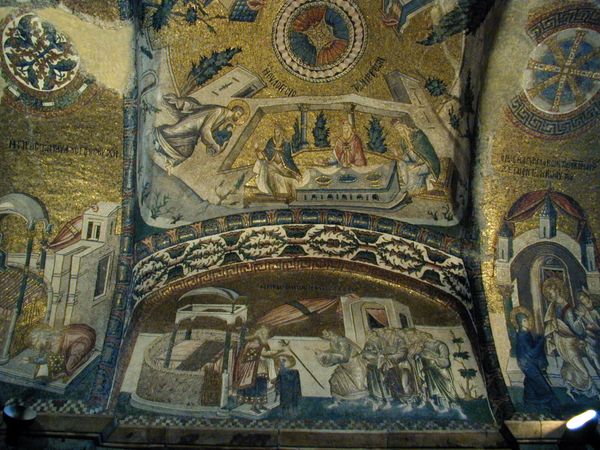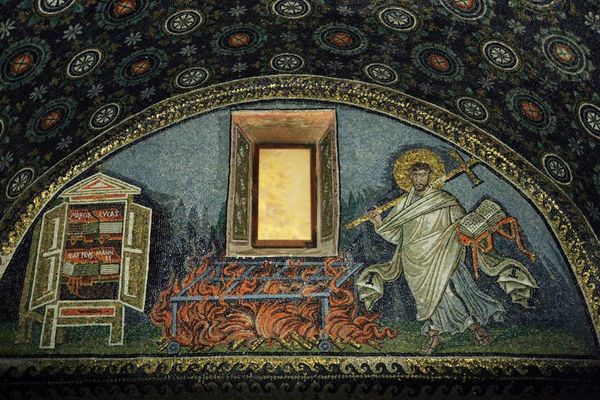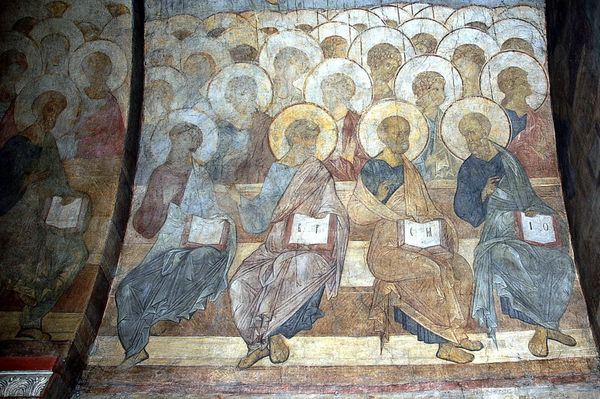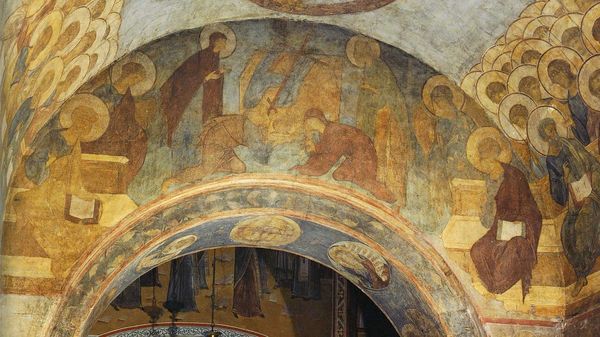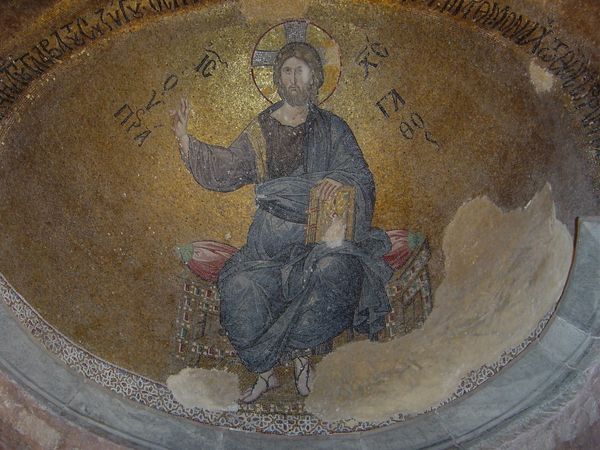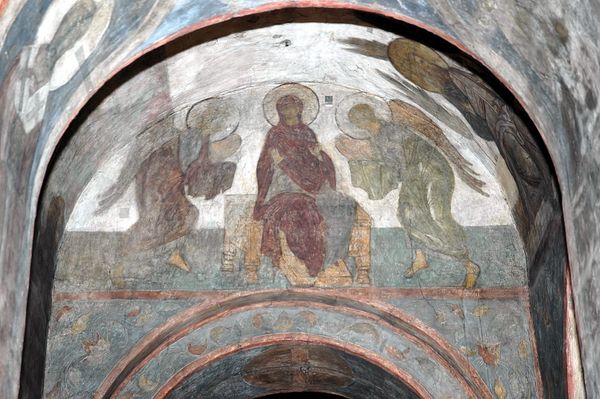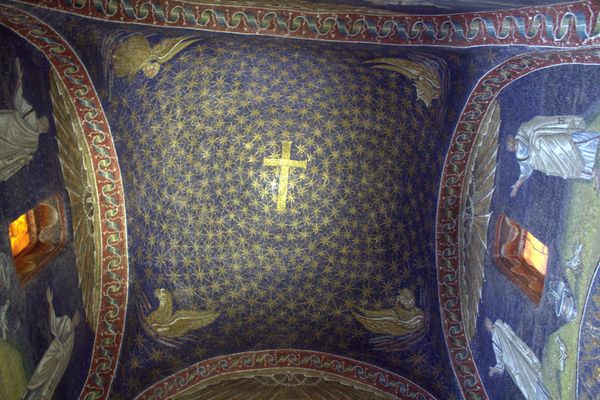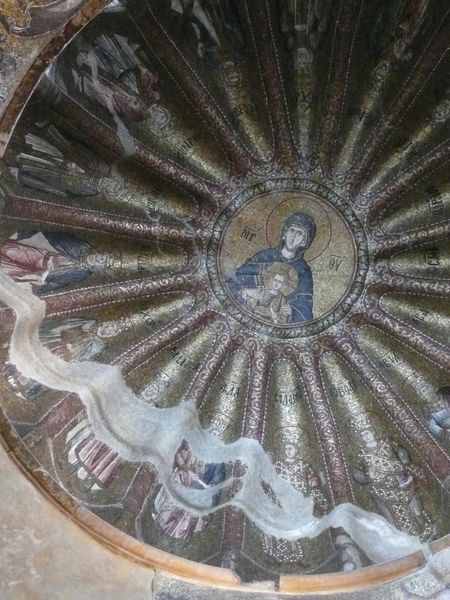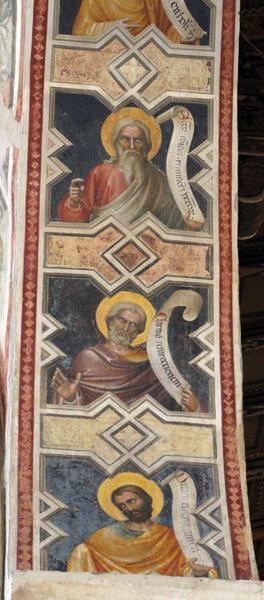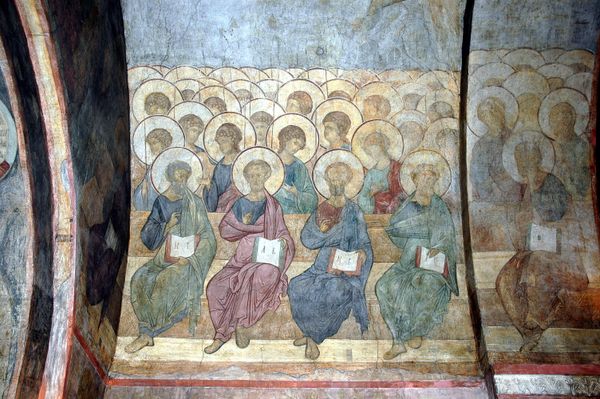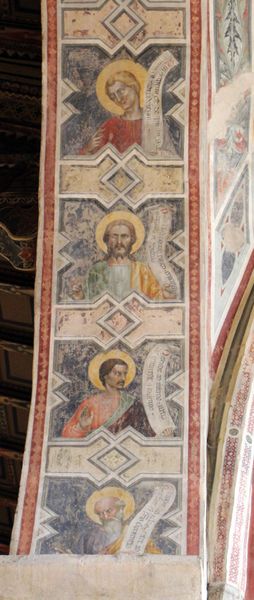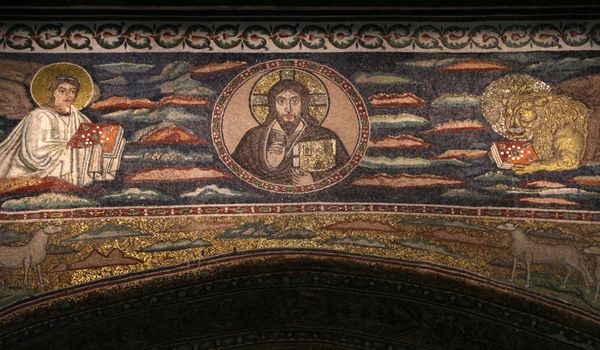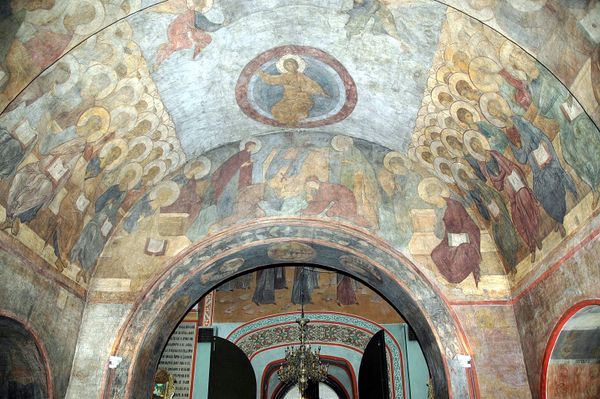
painting, fresco
#
portrait
#
byzantine-art
#
medieval
#
narrative-art
#
painting
#
figuration
#
fresco
#
jesus-christ
#
christianity
#
men
#
line
#
christ
Copyright: Public domain
Curator: Gazing upon Andrei Rublev's fresco, "The Last Judgement: Jesus Christ," dating back to 1408 within the Assumption Cathedral in Vladimir, Russia, I immediately perceive a distinct and unusual lightness. Editor: It does strike you initially, doesn't it? The medium is fresco – pigments applied to wet plaster – and despite the subject matter being the Last Judgement, that sense of looming dread is definitely subdued. Curator: Absolutely. Instead, there is a pervasive sense of hope and redemption embedded in the imagery. Look at Christ; there’s compassion etched into His features, and the use of circular forms contributes to this harmonious impression. The circles create an eternal rhythm that feels inclusive. Editor: Well, you see, that’s fascinating because consider how frescoes were created. Working from the top-down, layer by layer, they require careful planning of the composition in advance. The color selection seems pragmatic; what was locally available? The entire wall depends on what those first colors convey – in terms of cost, procurement, and sheer physical labor to realize the aesthetic. Curator: Precisely. That’s why Rublev’s strategic employment of colors like soft blues and earthy tones is so effective in conveying serenity and understanding rather than evoking sheer terror and damnation. Editor: You are definitely right that color palette adds warmth; what does the limited material presence itself convey about societal limitations and production of meaning? Each step—from mining pigments to the artisan's careful brushstrokes—involves the transfer of human energy to material. Curator: Exactly, it becomes clear why Rublev's work has become such an enduring and culturally significant artifact. The image of the compassionate Christ—an inclusive symbol—has come to reflect the resilience of the culture itself. Editor: That’s where I start to really think about art and labor: the convergence of human exertion, religious faith, and material expression. That final composition stands, in itself, for much more. Curator: Ultimately, viewing Rublev's 'Last Judgement' leaves me with a profound sense that divine judgement can also be equated to divine grace. Editor: An instance of humanity meeting raw matter, transmuting labor to something resonating across the ages—impressive, indeed.
Comments
No comments
Be the first to comment and join the conversation on the ultimate creative platform.
